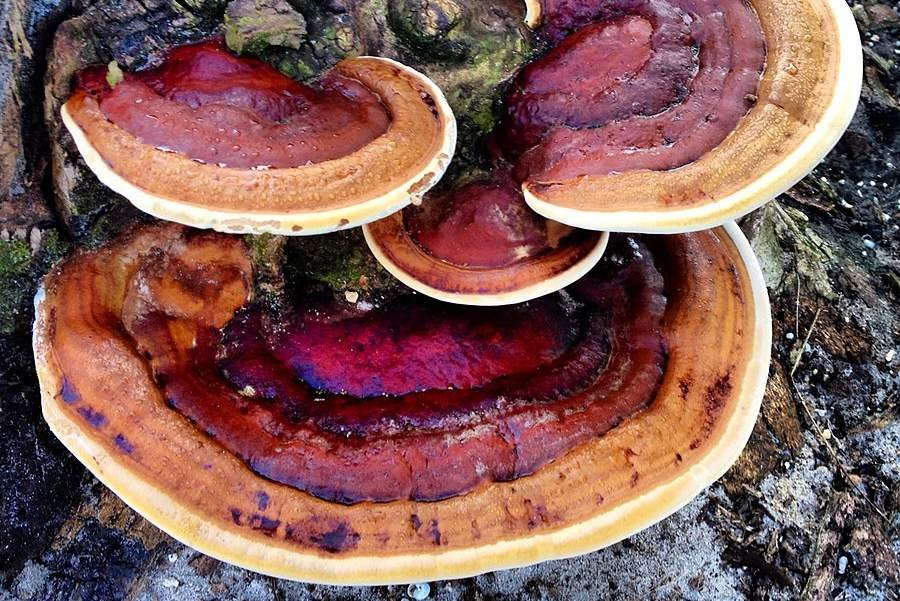Reishi, Chaga, turkey tail, lion’s mane, agarika, cordyceps, if these don’t ring a bell, they all have one thing in common. These are medicinal mushroom species, and in the multi-billion dollar supplement industry, they are one of the fastest-growing products.
As the supplement industry is currently valued at $220 billion, $25.4 billion of that is the mushroom trade. Medicinal mushroom supplements pair with several emerging trends, such as the shift towards “functional foods” or “whole foods” supplements, i.e. products that contain an entire concentrated food item and not an isolated chemical or nutrient.
Claims abound regarding what mushrooms have the potential to do inside of us. During COVID-19 there was an interest in mushrooms not only as an anti-viral agent, but also because they are one of the only foods to contain vitamin D, one of the most essential in preventing negative COVID outcomes.
However they are also touted as having anticancer and antibacterial properties. Others are claimed to slow aging, or act as a “nootropic,” a nutrient that powers brain activity similar to caffeine. Beyond some of these admittedly well-researched claims, mushrooms are undoubtedly rich in a variety of more traditionally-researched ingredients that alone make them worth sticking in a stew, in a wok, or on top of a steak.
In the first part of a three-part story on medicinal mushrooms and supplementing with them, we will look at two of the most well-studied—going back thousands of years.

Chaga and Reishi—ancient healers
In ancient Chinese medical manuals like the pharmacological text, Bencaojing jizhu, mushrooms are mentioned as remedies for various ailments including the ravages of time. Still today, a pair of mushrooms, chaga, and reishi, are said to improve healthspan.
“For over 2,000 years reishi mushrooms have been recognized by Chinese medical professionals as a valuable remedy,” reads a study from the American-Eurasian Journal of Botany. Its Chinese name means “spiritual potency,” while it’s also known as the “mushroom of immortality,” and the “medicine of kings”.
Chaga has actually been extensively studied for use as a therapeutic intervention, due to its use for who-knows-how-long in the northern reaches of the world where this species of white rot fungus grows on birch trees.
Neither chaga nor reishi creates any reactions that are strictly related to longevity, for example, they neither lengthen telomeres, nor replenish levels of NAD+, nor act as a senolytic to kill senescent cells. Instead, they have been demonstrated to improve health in other ways, which certainly in theory could extend one’s lifespan.
Reishi protects the liver, significantly inhibits all four types of allergic reactions, and activates immune cells, particularly ones that kill tumor cells, and invasive bacteria. However one of the most interesting from a functional medicine standpoint, is their content of triterpenes. Triterpenes are very well-known as anti-inflammatories, but also immune modulators.
Reishi, according to mycologist Christopher Hobbs, contains a variety of different forms of triterpenes, some closer in consistency to a lipid, others to a sugar, or something lighter, all of which interact in different ways with different cells and tissues, thus broadening their potential effects.
Chaga on the other hand was shown to have a very interesting therapeutic potential in a South Korean study from 2004, which found 40% less DNA damage observed in human lymphocytes when treated with compounds brought about by the consumption of chaga. Lymphocytes are a type of white blood cell, and one of the main immune cells.
Another study found that chaga inhibited tumor cell growth in human hepatoma cells (liver cancer). This study listed a variety of others that found similar anti-tumor, and hepato-(liver)-protective studies. One study looking at chaga’s effect on breast cancer tumors found it induced autophagy, or programmed cell death, by inhibiting the AMP Kinase pathway—part of the smoking gun that gave people the idea that red meat caused cancer.
More recent studies found during the COVID-19 pandemic that terpenoids from chaga had “auspicious” and “excellent” ability to interfere with the viral spike glycoprotein we’ve all heard so much about. In contrast to the variety of available vaccinations, chaga is likely to continue working even for current and future variants, as chaga contains a variety of terpenoids that all produced the same effect.

Fiber in mushrooms
An interesting and lesser-known aspect of the nutritional content in mushrooms is their fiber content. Fiber, aka polysaccharides, aka starch, aka complex carbohydrates, aka “good carbs,” is vital for preventing all manner of GI-tract diseases, from irritable bowel syndrome to colon cancer, but also diabetes, and other metabolic issues, and even depression.
Mushrooms contain two kinds of fiber, which from the perspective of a functional medicine or whole foods diet is great. Most supplemental fiber is cellulose, which is the same source of fiber most Americans get from the largest source of American fiber—whole grain bread products.
Certain mushrooms come loaded with insoluble and soluble fiber—up to 60%, which the bacteria in our gut and colon need. The cell walls of mushroom caps can be as much as 60% chitin and beta-glucans.
Some consider mushrooms the best form of prebiotic available, and one review showed that “β-glucan… application results in a decrease in the total cholesterol content in blood and may also contribute to reductions in body weight”.
That same paper claimed “[Beta-glucans] are a key reason fungi are used as food additives and in pharmacology; they have also shown beneficial effects when used in the treatment of various diseases”.
A whole foods supplement of nutritional mushroom is also thereby an excellent source of fibers, one of the key reasons someone would look for a whole foods supplement—the containing of all parts of the food item.
In the next part of this story, more mushrooms, and how to know if a supplement is a good one. WaL
PICTURED ABOVE: Reishi mushroom growing wild. PC: MyCallOhGee, CC 2.0.
If you think the stories you’ve just read were worth a few dollars, consider donating here to our modest $500-a-year administration costs.



